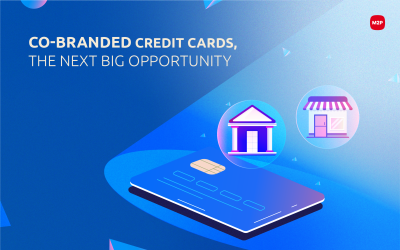
India has the world’s largest diaspora. More than 30 million Indians reside outside the country. The Non-Resident Indians (NRIs) and Overseas Citizens of India (OCIs) from the US, UK, and the Middle East make India the world’s largest recipient of remittances. Despite the pandemic and its economic impact, India received $87 billion* remittance in 2021. (Source: World Bank 2021 report)
The MENA region is home to a significant expatriate population. And more than half of its outbound remittances are sent to India. India-UAE is the world’s second-largest remittance corridor clocking more than $20 billion in transaction value. It makes up 33% of India’s total inward remittance volume. According to the Central Bank of the UAE’s (CBUAE) report, the outward remittances of the UAE increased by 9.2% in the third quarter of 2021. India retained its position as the top recipient by accounting for 26% of the outward remittance.
India and the Middle East
Now, remittances from the Middle East are not a recent phenomenon in India. They go way back to the 1900s when Indians moved to the Persian Gulf, searching for better opportunities. Since then, India’s trade relationship with the UAE and the rest of the countries in the Middle East has flourished. Today, over 7.6 million Indians live in the Middle East.
During 2021–2022, India chalked up a total trade of $154 billion with countries in the Gulf Cooperation Council (GCC), accounting for 18.3% of its collective imports and exports value. The bilateral trade between India and the UAE is valued at $72.9 billion. The UAE, Saudi Arabia, and Iraq are India’s third, fourth, and fifth-biggest trading partners, and the trade sector is expected to expand over the upcoming years.
The recent Comprehensive Economic Partnership Agreement (CEPA) is a significant milestone for bilateral trade relations between India and the UAE. Effective from 1 May 2022, CEPA offers an open and equitable ecosystem for businesses and accentuates new frontiers in cross-border payments and remittances.
Tale of Money Transfer to India
In the early eighties and nineties, expats physically visited money transfer operators and agents to send money to their families back home, while businesses and Governmental agencies depended on conventional modes of cross-border payments. However, these traditional methods were fraught with challenges such as security, time delay, high costs, and currency conversion fees.
For example, Demand Draft (D/D) was one of the earliest forms of remittance. D/D is traceable at any given time and hence, was considered the safest and niftiest money transfer method. However, it was an exceptionally tedious and time-consuming process. But slowly, things changed. Remittances started to evolve, from drafts to personal cheques and wire transfers to the online and mobile transfers of today.
Key Challenges in Remittances
Differences in the time zones, currency conversion, multiple compliance checks, unforeseen delays, charges, and the uncertainty of receipt of payment were challenges that payers and payees faced in international remittance. As customer preferences and technologies evolved, cost, compliance, speed, and interoperability emerged as factors that affected convenience, security, and seamlessness.
Cost
The charges associated with the remittances vary across markets and services providers. Key factors include the transaction amount, transfer destination, payment channel, and exchange rates. In addition, the cost of a service provider is subject to the complexity involved in managing settlements in multiple currencies and the time and effort required to maintain compliance with the KYC/AMC guidelines and partnerships. This calls for innovative technologies and digitization to minimize the cost, in turn reducing the overall transaction cost for the customers.
Compliance and Speed
The most common reasons for the delay in remittances are the fragmented remittance information coupled with the extensive checks for anti-money laundering and fraud activities. Financial institutions ought to carry out an overarching list of compliance checks to mitigate risks. A central hub to share cross-national information can aid in speeding the payment process.
Interoperability
Interoperability plays a crucial role in improving the speed and time of remittances. Cross-border payments are time-intensive — lesser the compatibility between the systems, the higher the transaction risks. A standardized global messaging format reduces the time, effort, and error that arises with the translation.
UPI — Resolving the Challenges in Inward Remittance
The introduction of UPI has changed the course of remittances. This ground-breaking financial innovation has the potential to help the payer and payee overcome remittance challenges and has made international transfers quick, simple, cost-efficient, and transparent. Money transfer institutions are tapping the potential of fintechs to develop a UPI-based cross-border payment ecosystem that leverages global networks to make overseas transfers more reliable and secure.
As one of the largest markets for inward remittances, India is adopting UPI as a fundamental mode of remittance through its strategic collaboration with several nations. National Payments Corporation of India (NPCI) set up a payments wing (NIPL) to internationalize UPI and Rupay, and enable real-time bank account payouts.
NIPL has inked agreements with several countries in the Middle East and the Asia Pacific, including United Arab Emirates, Nepal, Bhutan, Singapore, and Japan, to deploy the UPI payment rails in their jurisdictions. In the last two years, companies like LuLu Financial and Al Ansari Exchange have benefitted from real-time UPI–based remittances.
Benefits of Integrating UPI and Remittance
Mobile-first Interoperability
UPI offers a mobile-first, interoperable open payment infrastructure. This allows Payment Service Providers (PSPs) operating on diverse payment systems to undertake, clear, and settle payment transactions through a common interface with common identifier/security standards. This minimizes the challenges of integration and interoperability.
Anywhere Anytime Availability
Usually, cross-border payments are restricted to banking hours/days. But UPI is a 24×7, 365 days service. With UPI, remittances can be done at any time via more than one digital channel from anywhere without worrying about the banking hours, bank/public holidays, or even bank strike.
Real-time Transactions
UPI is a real-time payment system that instantly completes and settles the transactions. It eliminates the need for registering the payee and the waiting time to activate the payee as a beneficiary. The interface allows the users to transfer money by simply keying in the virtual address or UPI ID to make the requisite payment. This will drastically reduce the transaction time and associated risks.
Curtails Error
A lot of things can go wrong when customers transfer money by entering the details of the beneficiary’s bank account. For example, they can provide an incorrect account number or a wrong IFSC code leading to a transaction failure. UPI remittance can curtail such errors as the customer can disregard the bank account details and remember only the Virtual Payment Address (VPA) or the UPI ID to complete a transaction successfully.
Prevents Fraud
UPI uses proxy identifiers like a mobile number and a user-specific Unique Identifier (UPI ID or VPA) to make payments. This is the main advantage of UPI as it addresses security and privacy concerns. Additionally, the UPI ecosystem has single-click two factor authentication to protect users from financial fraud during digital transactions.
Reduces Waiting Time and Friction
As established earlier, the remittance process entails filling up the beneficiary’s bank account details and waiting several hours to transfer the funds to their friends/family. In the meantime, the senders and receivers are both left in the dark over the state of a transfer. Implementing UPI in remittance systems helps address such frictions as it enables instant transactions and lets the customers know the status of the money transfer.
Increases Cost-Efficiency
Banks charge a competitive fee for each international transaction. Since the interface has the potential to simplify the correspondence between global banks, it would reduce the time and effort involved in each transaction. This allows banks to lower the transaction fee.
UPI’s real-time, round-the-clock, and simple interface radically enhances the cross-border remittance experience as customers benefit from superior efficiency, speed, accessibility, and transparency.
M2P — UAE’s first UPI- enabled Remittance Service Provider
As UAE’s first UPI-enabled remittance service provider, we enable banks and foreign exchange operators to facilitate end-to-end settlements inclusive of conversion facility. Our deep domain expertise, innovation, and technology know-how render a hassle-free/frictionless remittance experience for both the payer and payee.
Most importantly, our intermediary banks are certified by NPCI, and we are compliant with the remittance directives issued by the Reserve Bank of India (RBI). Our full-fledged, mobile-first, customizable API stack simplifies UPI transactions and enables real-time international transfer.
To know more about using UPIs for cross-border remittances, write to us at business@m2pfintech.com.
Subscribe to our newsletter and get the latest fintech news, views, and insights, directly to your inbox.
Follow us on LinkedIn and Twitter for insightful fintech tales curated for curious minds like you.




0 Comments
Trackbacks/Pingbacks